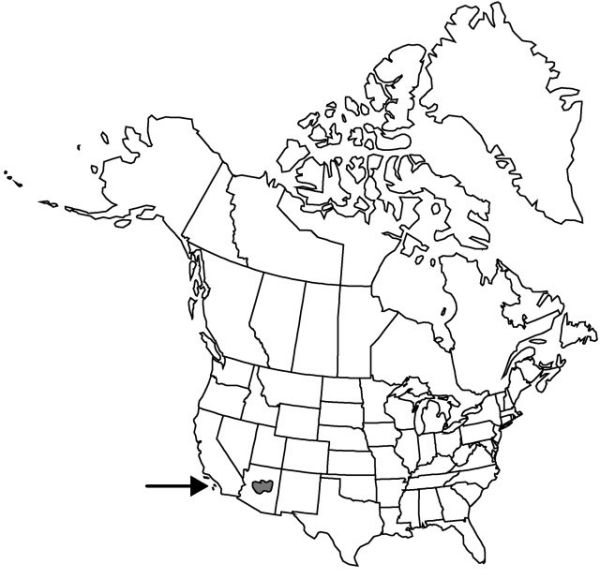Difference between revisions of "Yucca elata var. verdiensis"
in A. Cronquist et al., Intermount. Fl. 6: 533. 1977.
FNA>Volume Importer |
FNA>Volume Importer |
||
| Line 7: | Line 7: | ||
|year=1977 | |year=1977 | ||
}} | }} | ||
| − | |basionyms={{Treatment/ID/ | + | |basionyms={{Treatment/ID/Basionym |
|name=Yucca verdiensis | |name=Yucca verdiensis | ||
|authority=McKelvey | |authority=McKelvey | ||
| + | |publication_title=Yuccas Southw. U.S. | ||
| + | |publication_place=2: 98, plate 35. 1947 | ||
}} | }} | ||
|synonyms= | |synonyms= | ||
| Line 26: | Line 28: | ||
|elevation=300–1900 m | |elevation=300–1900 m | ||
|distribution=Ariz. | |distribution=Ariz. | ||
| − | |discussion=<p>S. D. McKelvey (1938–1947) wondered if <i>Yucca elata </i>var.<i> verdiensis</i> might be a mountain variety of <i>Y. angustissima</i>. On the other hand, she pointed out the differences between the two taxa and stated that the features of the former bear “no resemblance to those of <i>Y. angustissima</i>.” J. M. Webber (1953) suggested that <i></i>var.<i> verdiensis</i> is a hybrid between <i></i>var.<i> elata</i> and <i>Y. angustissima</i>.</p> | + | |discussion=<p>S. D. McKelvey (1938–1947) wondered if <i>Yucca elata </i>var.<i> verdiensis</i> might be a mountain variety of <i>Y. angustissima</i>. On the other hand, she pointed out the differences between the two taxa and stated that the features of the former bear “no resemblance to those of <i>Y. angustissima</i>.” J. M. Webber (1953) suggested that <i></i></i>var.<i><i> verdiensis</i> is a hybrid between <i></i></i>var.<i><i> elata</i> and <i>Y. angustissima</i>.</p> |
|tables= | |tables= | ||
|references= | |references= | ||
| Line 50: | Line 52: | ||
|publication year=1977 | |publication year=1977 | ||
|special status= | |special status= | ||
| − | |source xml=https://jpend@bitbucket.org/aafc-mbb/fna-data-curation.git/src/ | + | |source xml=https://jpend@bitbucket.org/aafc-mbb/fna-data-curation.git/src/f6b125a955440c0872999024f038d74684f65921/coarse_grained_fna_xml/V26/V26_890.xml |
|genus=Yucca | |genus=Yucca | ||
|species=Yucca elata | |species=Yucca elata | ||
Revision as of 19:34, 24 September 2019
Plants primarily caulescent, rarely acaulescent, 1.5–3.5 m. Stems 1–1.5 m. Leaf blade 25–45 × 0.2–0.6(–1.3) cm. Inflorescences paniculate, distally racemose, 7–13 dm; branches 1–3.5 dm; peduncle 1–1.5 m. Flowers: tepals 3.2–4.5 × 1.3–2 cm; filaments 1.5–2.5 cm; anthers (2–)2.5–4.8 mm; pistil 2–2.5 cm. Capsules 4–4.5 × 2–4 cm.
Phenology: Flowering late spring.
Habitat: Rocky hillsides, canyons
Elevation: 300–1900 m
Discussion
S. D. McKelvey (1938–1947) wondered if Yucca elata var. verdiensis might be a mountain variety of Y. angustissima. On the other hand, she pointed out the differences between the two taxa and stated that the features of the former bear “no resemblance to those of Y. angustissima.” J. M. Webber (1953) suggested that var. verdiensis is a hybrid between var. elata and Y. angustissima.
Selected References
None.
